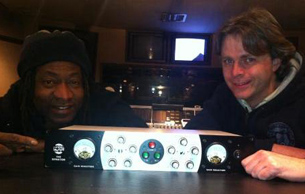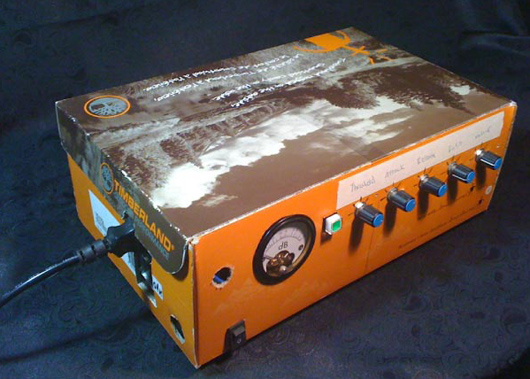Made In New York: The Senator Compressor by Origin Point Audio
Joel Scheuneman (Manhattan Center Studios) teams up with Jimmy Douglass (Timbaland, Rolling Stones, Justin Timberlake, Gang Of Four) to design a stereo compressor built for powerful, adaptable dynamic control.
Joel Scheuneman has always been a tinkerer. As a teenager, he was the type of kid who would fix your busted boombox for fun. Today, he’s a veteran technician at the bustling Manhattan Center Studios – the kind of big-room audio mecca that was supposed to have disappeared from the city decades ago.
This year, Scheuneman has developed a stereo hardware compressor for people who are just as serious about audio as he is; People like his co-designer Jimmy “The Senator” Douglass, a producer/engineer who’s probably best-known for his countless collaborations with Timbaland.
The Senator Compressor, which is takes its name from Douglass, started its life as a handful of IC chips in a cardboard shoebox (Timberland, of course).
This original version of the design dropped jaws despite the fact that it had no user controls, and instead relied on a gain-reduction circuit that could think for itself. But bit-by-bit, Scheuneman and Douglass tested and redesigned the box, adding tweak-points and tailoring The Senator’s response until it evolved into a refined studio workhorse. Still, the heart of Scheuneman’s original circuit remains intact.
“It’s based around what I call a ‘dynamic ratio’,” says Scheuneman. “How steep the ratio is changes dynamically depending on how loud the music you feed it is.” Put simply, the hotter your signal gets, the harder The Senator compresses.
Although this description may give the impression that the Senator is a radical sound-mangling demon, in practice I found it to be a smooth, musical compressor capable of massive amounts of dynamic control without extreme artifacts. That’s the result of a ratio that ramps up gradually in response to a hot signal.
According to the manual, a low setting on the Dynamic Ratio knob could provide a compression ratio of 1.1:1 for quiet passages and 3:1 for louder parts, while a higher setting might cause the ratio to vary from 4:1 at low input levels to 20:1 at higher levels. As the level increases, the compression ratio increases in a smooth, continuous way, leading to significant dynamic control without awkward attack and release artifacts.
“We could go into a kind of braniac explanation of how all that works,” Scheuneman says, “but I think, at the end of the day, most people will find it pretty intuitive.”
I’d tend to agree. The Senator has a few more knobs than the simplest compressors on the market, but the controls it does have are pretty straightforward. Most significantly, it’s difficult to turn them in a way that makes the unit sound bad.
Although it is possible to coax noticeable pumping effects out of The Senator at extreme settings, the sound of the box almost never overpowers the original sonic character of the source material.
“Jimmy [Douglass] has described it as being almost like an analog version of the [Waves] L2,” Scheuneman says. “It can do the same kind of thing without that [gritty] digital sound. But I think that, most of all, it’s flexible.
“I originally imagined it as a mono compressor for instruments, but the more people used it the more they saw its potential as a stereo compressor for the mix bus. It can do pretty extreme compression on something like bass or drum room mics, or it can do a more subtle kind of thing on a vocal or an entire mix.”
But as flexible as The Senator may be, even it has its limitations. If you’re looking for a retro character-compressor, this is one unit that will never fill the role. However, engineers who are eager for two channels of high-quality, modern-sounding VCA compression should take note.
At an introductory price of $2,500 for a stereo unit, The Senator is a cost-effective, adaptable alternative to similar offerings from dbx and SSL.
For more information on The Senator compressor, visit http://www.originpointaudio.com.
Please note: When you buy products through links on this page, we may earn an affiliate commission.










Rack-Mount Monitor
April 28, 2012 at 11:47 am (13 years ago)Great post! I wanted to drop you a quick note to express my thanks. There
are very few people in this world who gives such tremendous views. I appreciate
your work and hopping some more in future as well.